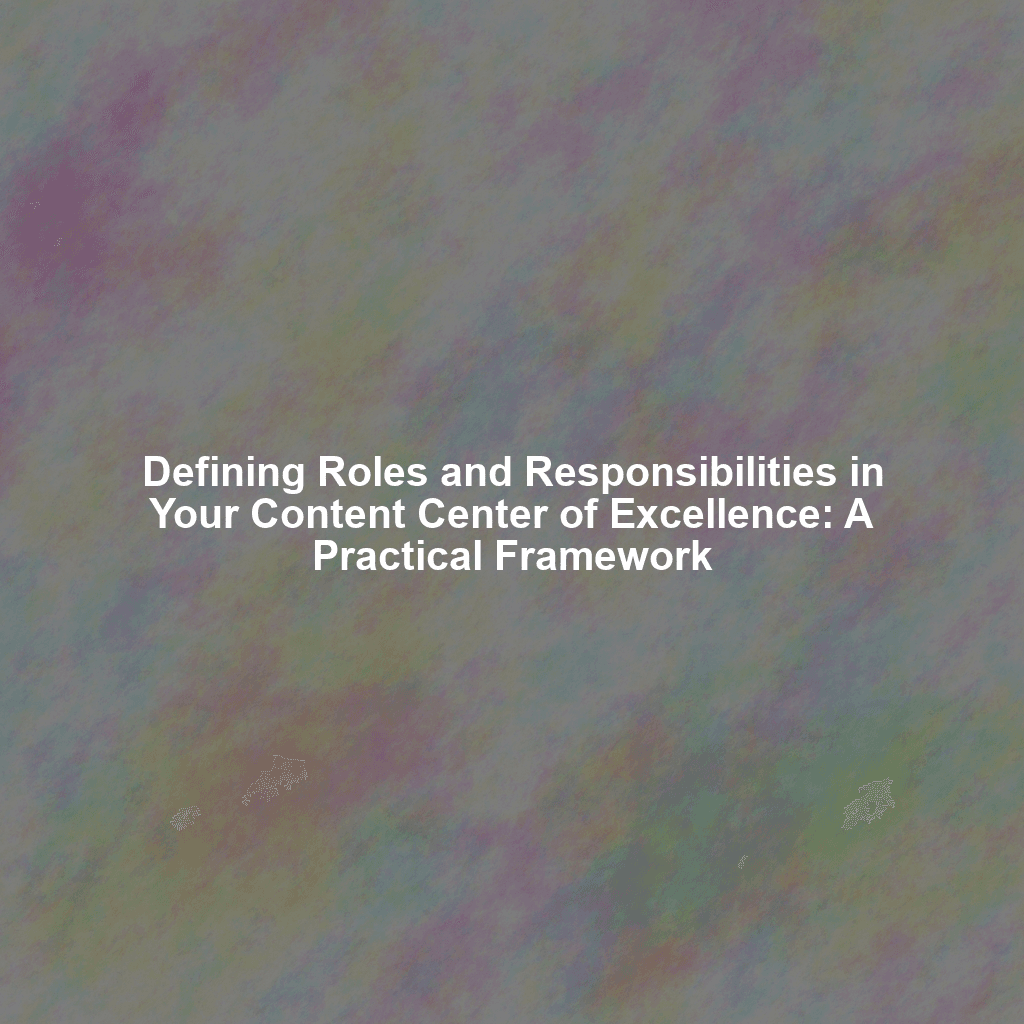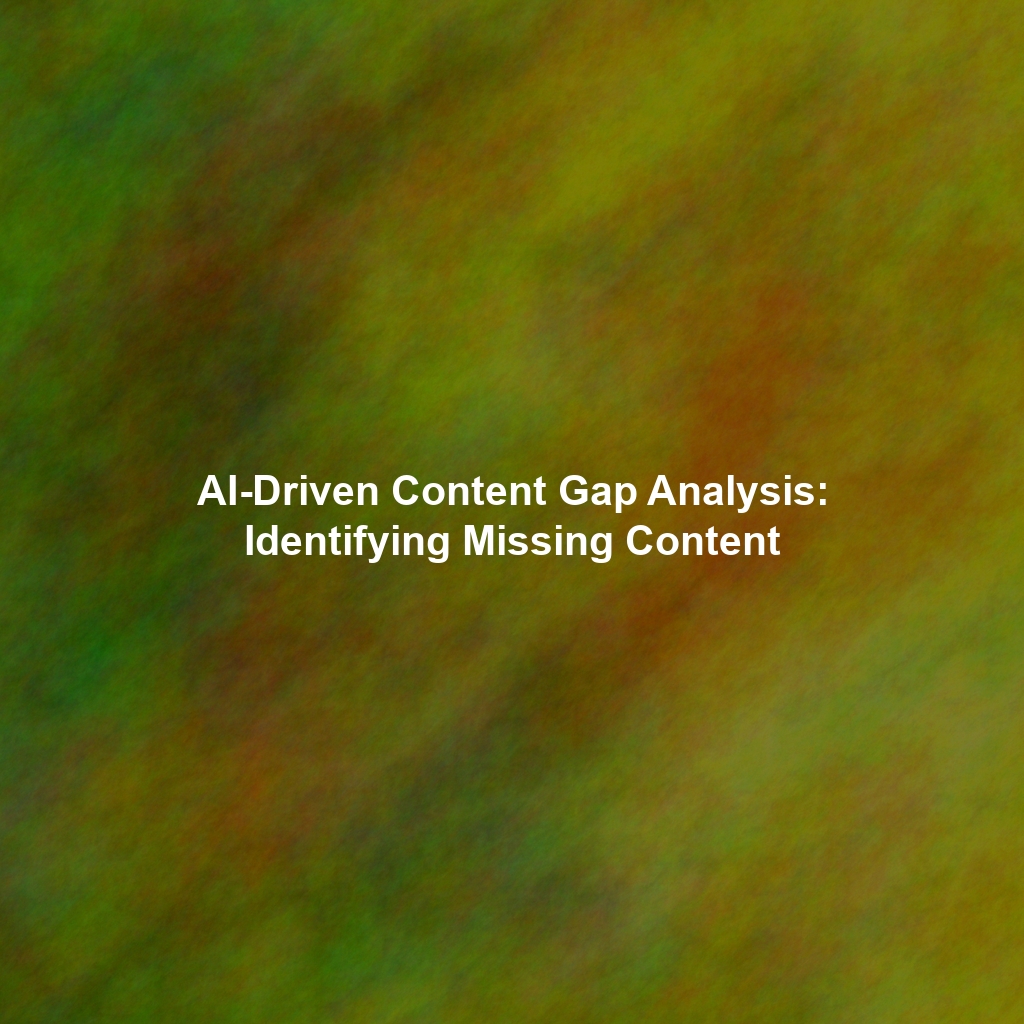In today’s competitive digital landscape, high-quality content is crucial for attracting, engaging, and retaining customers. A Content Center of Excellence (CCoE) provides a structured approach to content creation, management, and governance, ensuring consistency, quality, and effectiveness. However, a CCoE is only as effective as its team. Clearly defined roles and responsibilities are paramount to its success. This article provides a practical framework for defining these roles, fostering collaboration, and optimizing content production.
Why Define Roles and Responsibilities in a CCoE?
Before diving into specific roles, it’s important to understand why defining responsibilities is so crucial. Without clear definitions, your CCoE risks:
- Duplication of Effort: Multiple team members working on the same tasks, leading to wasted time and resources.
- Lack of Accountability: No one takes ownership of specific tasks or outcomes.
- Inconsistent Quality: Varying standards across different content pieces.
- Slower Production Times: Confusion and bottlenecks hindering the content creation process.
- Reduced Content Performance: Content failing to meet its objectives due to a lack of strategic alignment.
Key Roles in a High-Performing Content Center of Excellence
The specific roles within your CCoE will depend on your organization’s size, industry, and content needs. However, some core roles are essential for most organizations:
Content Strategist
Responsibilities:
- Developing and implementing the overall content strategy.
- Conducting audience research and identifying content gaps.
- Defining content guidelines, style guides, and brand voice.
- Performing competitive analysis.
- Measuring content performance and identifying areas for improvement.
- Working closely with stakeholders to align content strategy with business objectives.
Skills: Strategic thinking, analytical skills, communication skills, knowledge of content marketing principles, SEO understanding.
Content Writer
Responsibilities:
- Creating high-quality, engaging content in various formats (blog posts, articles, website copy, social media updates, etc.).
- Conducting research and gathering information.
- Writing SEO-friendly content.
- Adhering to brand guidelines and style guides.
- Collaborating with editors and designers to ensure content is visually appealing and error-free.
Skills: Excellent writing skills, research skills, adaptability, SEO knowledge, understanding of different content formats.
Content Editor
Responsibilities:
- Reviewing and editing content for accuracy, clarity, grammar, and style.
- Ensuring content aligns with brand guidelines and content strategy.
- Providing constructive feedback to writers.
- Optimizing content for SEO.
- Managing the content calendar and ensuring deadlines are met.
Skills: Excellent editing skills, attention to detail, communication skills, SEO knowledge, project management skills.
Content Designer
Responsibilities:
- Creating visually appealing and engaging content, including images, videos, infographics, and presentations.
- Developing and maintaining brand visual guidelines.
- Collaborating with writers and editors to ensure content is both informative and visually appealing.
- Optimizing visuals for different platforms and devices.
Skills: Graphic design skills, video editing skills, understanding of visual communication principles, proficiency in design software (e.g., Adobe Creative Suite).
Content Data Analyst
Responsibilities:
- Tracking and analyzing content performance metrics (e.g., website traffic, engagement, conversions).
- Identifying trends and insights to improve content strategy and performance.
- Creating reports and dashboards to communicate findings to stakeholders.
- Recommending changes to content strategy based on data analysis.
Skills: Analytical skills, data visualization skills, proficiency in data analysis tools (e.g., Google Analytics, Tableau), understanding of content marketing metrics.
Building Effective Workflows and Collaboration
Once you’ve defined the roles, it’s essential to establish clear workflows and foster collaboration. Here’s a framework to consider:
- Define a Content Creation Process: Outline the steps involved in creating content, from ideation to publication.
- Establish Communication Channels: Use project management tools, communication platforms (e.g., Slack, Microsoft Teams), and regular meetings to facilitate communication and collaboration.
- Implement a Content Calendar: Plan and schedule content in advance to ensure a consistent flow of high-quality content.
- Create Style Guides and Brand Guidelines: Ensure consistency in tone, voice, and visual style across all content.
- Provide Regular Feedback: Offer constructive feedback to team members to help them improve their skills and performance.
- Use Project Management Tools: Tools like Asana, Trello, or Monday.com can help manage tasks, track progress, and facilitate communication.
A Practical Framework for Defining Responsibilities
Here’s a table to help you visualize and assign responsibilities:
| Role | Key Responsibilities | Key Performance Indicators (KPIs) |
|---|---|---|
| Content Strategist | Developing content strategy, audience research, competitive analysis | Website traffic growth, lead generation, content engagement |
| Content Writer | Creating blog posts, articles, website copy | Number of articles published, word count per week, readability score |
| Content Editor | Editing and proofreading content, ensuring brand consistency | Number of edits per article, turnaround time, error rate |
| Content Designer | Creating visuals, designing infographics, video production | Engagement rate on visuals, visual assets completed on time |
| Content Data Analyst | Tracking content performance, analyzing data, generating reports | Traffic attribution, engagement rate, conversion rate from content |
Remember to adapt this framework to your specific needs and regularly review and update roles and responsibilities as your CCoE evolves.
Conclusion
Building a successful Content Center of Excellence requires more than just talented individuals; it requires a clear understanding of roles, responsibilities, and workflows. By implementing a practical framework for defining these elements, you can create a high-performing team that consistently delivers high-quality content, drives engagement, and achieves your business objectives. Remember that continuous improvement and adaptation are key to maintaining a thriving and effective Content Center of Excellence.
 Skip to content
Skip to content

